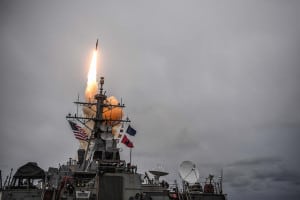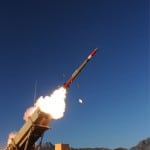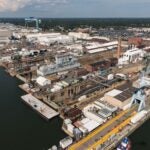
Any Guam missile defense system would need the Navy’s SM-6 missile for its utility in hyperosnic missile defense, a Missile Defense Agency (MDA) official said last week. SM-6 is a “fantastic missile, just absolutely great missile” because it performs various missions like self-defense, area defense, force level defense, prompt sea strike and sea-based terminal defense of hypersonic weapons,” Rear Adm. Tom Druggan, Program Executive for Aegis Ballistic Missile Defense (BMD) at MDA, said Nov. 18 during a Center for Strategic…

 By
By 











